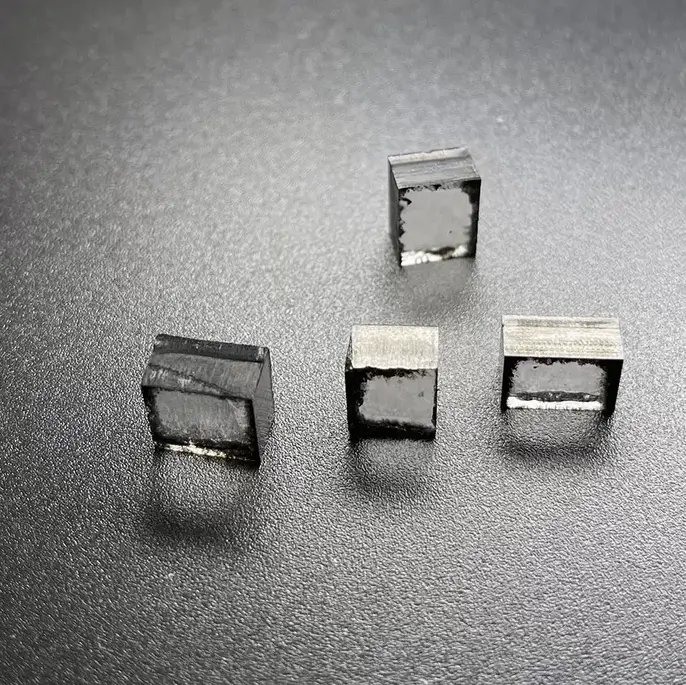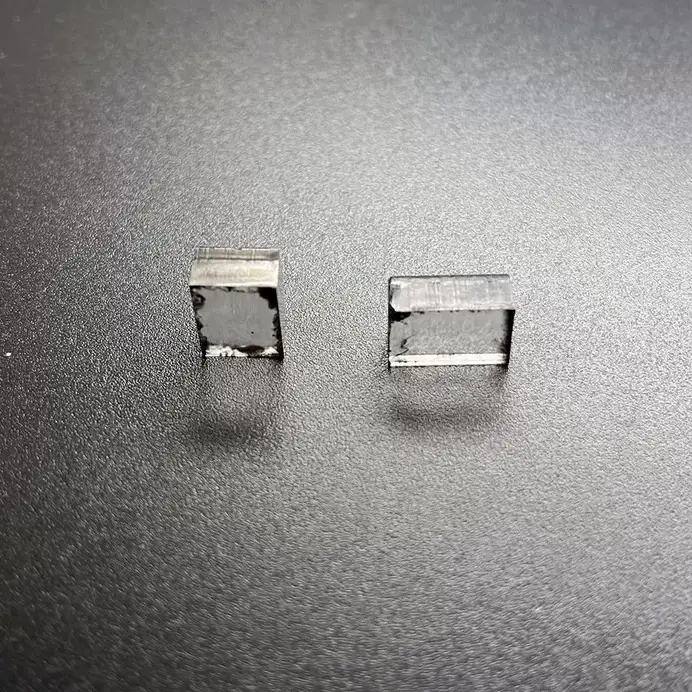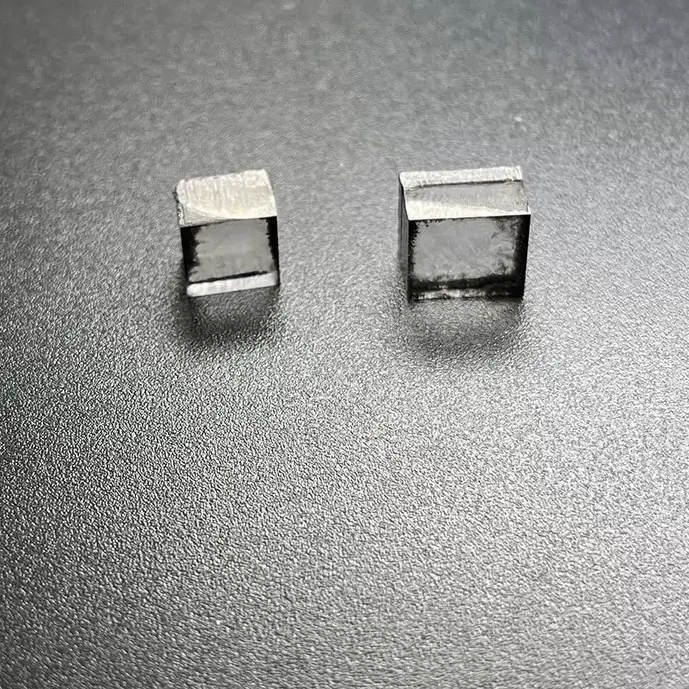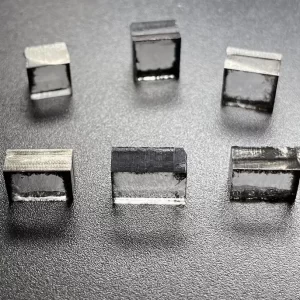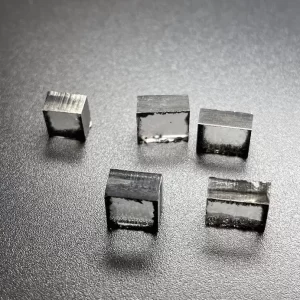Rectangular GHI Color 8.0 9.0 Carat CVD Rough Diamonds For Enagement Ring
Rectangular Shape GHI Color 8.0-9.0 Carat CVD Rough Diamonds For 2.5ct Cvd Diamond Enagement Ring Making
CVD Rough Diamonds Description
Lab grown rough diamonds include HPHT rough diamonds and CVD rough diamonds. Both HPHT and CVD are the two main methods to make lab grown rough diamonds.
How are lab grown rough diamonds made? Let’s see the below two main methods which can make lab grown rough diamonds.
1. High pressure high temperature process (HPHT)
In the laboratory to create a high pressure and high temperature environment to produce lab grown diamonds, that is to imitate the formation conditions of mined diamonds in the depths of the earth. In the growth chamber, the carbon source decomposes in the molten metal, and the carbon atoms gather on a very small lab grown or mined diamond seed through the metal to form a unique lab created rough diamonds.
2. Chemical vapor deposition (CVD)
Lab grown diamonds are produced in a laboratory vacuum using carbon rich gases such as methane. The process of CVD is to decompose methane into carbon and hydrogen atoms, and then deposit them on diamond seeds to form square and flat lab grown diamond crystals.
How long does it take to make a lab grown diamond?
It usually takes weeks to make diamonds in the laboratory. Compared with the millions or even billions of years of mined diamond formation in the depths of the earth, it’s very short for creating lab grown diamonds.
Due to the different formation conditions, the nature of mined diamonds and cultivated diamonds are also different. Natural diamonds grow into octahedral crystals (eight equilateral triangular facets), while cultivated diamonds can grow into both octahedral and cubic crystals (six square facets).
CVD Rough Diamonds For Engagement Rings
Are you looking for a beautiful ring for your engagement? If you have a tight budget, consider buying a CVD diamond engagement ring. These diamonds have unmatched beauty and shine, and cost a fraction of the price of a natural diamond. Additionally, they are even purer than natural diamonds, thanks to careful production procedures. These diamonds are a perfect choice for those who want a diamond engagement ring with unmatched color and clarity.
Natural diamonds
When it comes to buying a diamond, you have a few different options. Natural diamonds have to be mined from the ground or sea floor, and then sold to cutters, wholesalers, and jewelry fabricators. They are also distributed to retailers, including big diamond chains, through independent stores. In order to make a natural diamond suitable for an engagement ring, it takes thousands of years to mine the stone, which involves high temperatures and pressures. CVD diamonds are far cheaper and environmentally friendly.
Because raw diamonds are so unique, you have to take care to create a beautiful setting for them. Raw diamonds lack the sparkle of polished diamonds, but you can add sparkle with a pave band or halo setting. You can also combine a diamond with a gemstone in a cluster setting. There are many styles to choose from, including vintage-style clusters and classic solitaire settings.
Natural diamonds were formed billions of years ago under tremendous heat. They traveled up through volcanic pipes. The high-pressure and high-temperature process induced the diamond seed to crystallize. The process requires great pressure and a great amount of energy, which makes it expensive. The cheaper CVD method is becoming more popular. This new technology makes it easier to create diamonds of higher quality. A perfect engagement ring is worth it!
Natural diamonds are rare and precious. Lab grown diamonds, on the other hand, have the same qualities as their natural counterparts. However, they can be more expensive. Many people still prefer to use natural diamonds for engagement rings because they represent a more ethical choice for their ring. In any case, the choice between natural and lab grown diamonds is up to you. You can choose to have your engagement ring made from either one of them, or even a combination of both.
Another option for buying a diamond engagement ring is buying a raw diamond from a seller who sells the stones. A trustworthy seller will sell you a piece of jewelry that is ethically sourced and conflict-free. A good place to buy a raw diamond is Etsy. It will save you a lot of money over time. If you have to purchase a diamond, check the seller’s authenticity and trustworthiness before deciding on a particular diamond.
Another option for buying a diamond is a lab-created diamond. Although these diamonds look almost identical to natural ones, they are much cheaper. Many natural diamonds sell for more than $8,000, and they cost a fraction of the cost. They are also a more sustainable choice if you want to be environmentally conscious. But be sure to do some research before buying a lab-created diamond.
Synthetic diamonds
If you’re considering buying an engagement ring with a diamond, you may be wondering if you should opt for a natural or a CVD diamond. The difference between a natural diamond and a CVD is its chemical makeup. A natural diamond requires thousands of years to grow and intense pressure and temperature to make it pure. A CVD diamond, on the other hand, is formed under carefully controlled conditions. This makes them a great choice for those seeking unmatched color and clarity.
The beauty of a CVD diamond is that it is as real as a natural diamond. The process of creating a CVD diamond is completely man-made, but it does have a social and environmental impact. And unlike natural diamonds, CVD diamonds are much cheaper than natural diamonds. Choosing a CVD diamond for your engagement ring is a smart move, since it has numerous advantages over natural diamonds.
Though both natural and CVD diamonds have the same chemical and physical composition, they are created in a different way. This makes them very difficult to tell apart, even for experts in gemmology. It also requires specialized instrumentation to tell the difference. The best way to tell the difference between a natural diamond and a CVD diamond is to ask your jeweler about the certification. The certifications issued by the Gemology Institute of America (GIA) will be able to tell you whether the diamond is a natural one or a CVD one.
The downside of raw diamonds is that they lack the sparkle that comes with a polished diamond. To compensate for this shortcoming, you should consider purchasing a ring that features a pave band or a halo setting. Either way, these diamonds will surely impress your loved one. If you’re not a fan of the raw look, you can always opt for a ring with a gemstone.
A CVD diamond is a gem-quality diamond made through a highly specialised process that has been perfected over several decades. This process starts with a small seed crystal and is then exposed to extremely high heat, comparable to the outer layer of the sun. The carbon-rich gas inside the chamber causes the crystal to grow in diamond form. Once the seed crystals have grown, they are polished to remove non-diamond carbon. This entire process can take between two and four weeks.
Another method of creating diamonds is the HPHT process. HPHT is a high-pressure, high-temperature process that mimics the conditions deep in the earth, where natural diamonds grow. Unlike the CVD method, the HPHT process requires more expensive heavy-duty equipment. Even so, a diamond simulant can provide a similar sparkle to a diamond but is cheaper than a natural diamond.
Cube-shaped diamonds
Cube-shaped rough diamonds for engagement rings can be used in a variety of settings. Many designers prefer to use small nugget-shaped diamonds. They do not consider the clarity and cut of the diamond, and are used as display stones in engagement rings. Bezel settings, on the other hand, add symmetry to a rough diamond. The cube shape is also popular in wedding rings.
If you are interested in buying a rough diamond for your engagement ring, you can start your search by searching Etsy or smaller diamond retailers. It’s important to remember that a genuine raw diamond is ethically sourced and conflict-free, so make sure to choose a trustworthy seller. Always ask about the origin of the diamond, and make sure to ask about its certification. If your partner has requested a particular color, ask if the diamond was created with conflict-free or ethically harvested diamond.
Choose a style that suits her. A classic ring with a white diamond is not for everyone, but a traditional white diamond may be just what your bride-to-be wants. Choose a ring in a contrasting colour. If your fiance likes nature, a nature-inspired ring is perfect. A ring inspired by a twig is a lovely gift for your partner. A modernist style includes a brown rough diamond surrounded by white diamonds. For a more modern look, opt for a ring in which a rough diamond is encased in a white gold band.
Another important characteristic of a diamond is its hardness. Diamonds are among the hardest gemstones. Only other diamonds can scratch a diamond, and they retain their polish well. This attribute is one of the reasons they are so popular in engagement and wedding rings. It’s worth mentioning that diamonds are also known for their durability and resistance to damage. This property makes diamonds ideal for engagement and wedding rings.
De Beers is responsible for mining the majority of the world’s rough diamonds. In the late twentieth century, De Beers’ market share was nearly 80%. Today, it is only a little over thirty percent. Throughout the last century, the company’s advertising campaign has helped revitalize the American diamond market and create new markets in countries without a diamond tradition. They’ve also worked hard to promote their own brand and licensed product lines, such as De Beers Diamond Jewelers.
Rectangular GHI Color 8.0 9.0 Carat CVD Rough Diamonds For Enagement Ring
